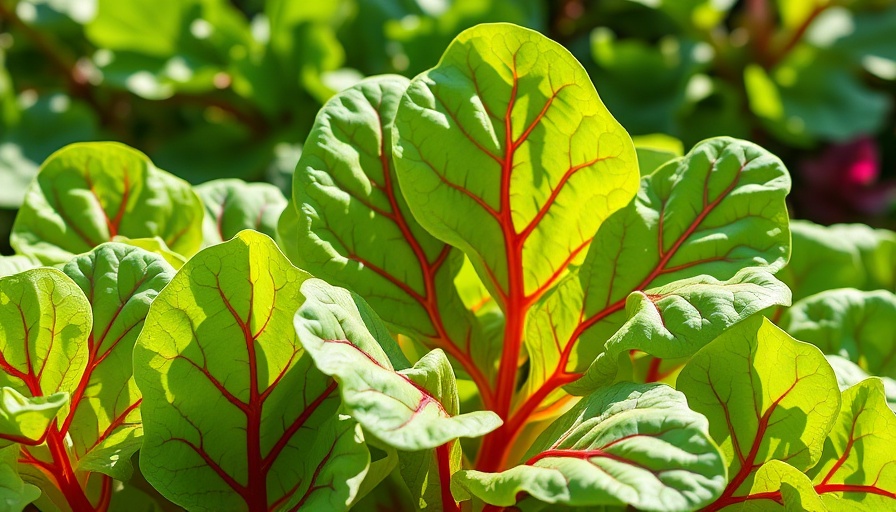
The Allure of Swiss Chard: A Visual and Nutritional Delight
Swiss chard has gained popularity among gardeners, not only for its nutritional benefits but also for its stunning visual appeal. These leafy greens serve as an ornamental addition to any yard or garden. Rich in vitamins A, C, and K, and packed with antioxidants, Swiss chard is a nutrient powerhouse. With its vibrant stems and luscious green leaves, it's a beautiful choice for homeowners who want to enhance their outdoor spaces.
Growing Swiss Chard: Easy Steps to a Bountiful Harvest
Starting your Swiss chard garden requires thoughtful preparation. Choose a sunny spot in your garden or containers, ensuring the soil is well-draining and enriched with organic matter. This leafy green thrives best in fertile soils, so be prepared to add compost or well-rotted manure before sowing. If you plan on sowing in spring, initiate your seedlings indoors about four weeks prior to the last frost date. Remember, a good start is key to a thriving garden!
Varieties of Swiss Chard: Color and Character in Your Garden
Swiss chard isn't just one variety; it offers an array of choices for the aesthetic gardener. The 'Fordhook Giant' with its massive white stems, 'Bright Lights' boasting a riot of colors, and 'Rhubarb' that mimics its namesake’s charm, all contribute to a diverse palette in your garden design. Opt for colorful varieties to bring a unique visual element amongst traditional flowers—your garden can be a canvas of winter greens!
Healthy Recipes to Savor: Making the Most of Your Swiss Chard
The culinary uses for Swiss chard are as diverse as the varieties themselves. Use the tender leaves in salads or as wraps, while the heartier leaves can be stir-fried or sautéed with garlic and olive oil. For those who enjoy experimenting, consider various flavor profiles by incorporating sesame oil or adding them to scrambled eggs. Not only will you enjoy the fruits of your labor, but you will also embrace a healthy lifestyle through delicious home-cooked meals.
Overcoming Growing Challenges: Tips for Successful Cultivation
While Swiss chard is relatively easy to cultivate, it’s not without its challenges. Pests and environmental factors like extreme heat can inhibit growth. Regularly check your plants and remove any pests promptly. Additionally, when temperatures soar, providing some shade can help maintain optimal growing conditions. The better you address these challenges, the more rewarding your gardening experience will be.
Successive Planting: How to Ensure a Continuous Supply
For those who want a constant supply of Swiss chard, succession planting is an effective strategy. This technique allows you to plant new seeds every few weeks during the growing season, ensuring a fresh harvest just as the earlier crops are being consumed. Keep track of your growing calendar and plan accordingly to enjoy Swiss chard throughout the summer into the fall.
Final Thoughts on Swiss Chard Gardening
Whether you're a seasoned gardener or just starting, incorporating Swiss chard into your landscape brings both beauty and nutrition to your home. This eye-catching plant not only enhances the visual aesthetics of your garden but also offers plenty of culinary versatility. With the right care, a garden filled with Swiss chard can become a centerpiece of your outdoor space, providing tasty additions to your meals and a flourishing environment that neighbors will envy.
 Add Row
Add Row  Add
Add 


 Add Row
Add Row  Add
Add 

Write A Comment